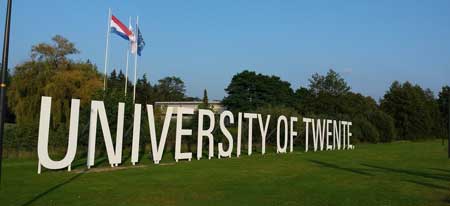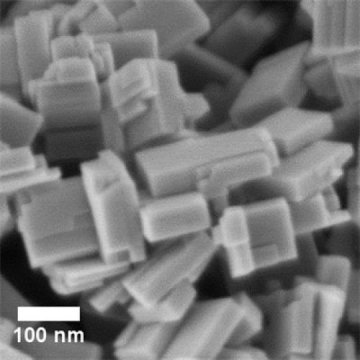Solar fuels, clean fuels from sunlight, water and CO2, form an attractive way for storing solar energy in hydrogen or hydrocarbons, for example.
The efficiency of this technology still needs a ‘boost’. Researcher Kasper Wenderich of the MESA+ Institute for Nanotechnology of the University of Twente (NL), investigated special nanoplates with platinum particles on them, accelerating the chemical conversion. During his research, he discovered why the effect of these particles is less than commonly expected.
The major problem of solar energy being converted into electric current, is storage. The demand for electricity often doesn’t keep up with the production. Couldn’t we store solar energy in sustainable ‘solar fuels’ is a question scientists worldwide ask themselves. Hydrogen can be one of those fuels, with water and sunlight as a basis. But also CO2 conversion is an option: an attractive way to tackle the huge emission problem in the world.
Steering electrons
For the chemical reactions involved, special materials are required, photocatalysts. Titanium dioxide is very often used, but according to Wenderich this has some limitations. He chose another alternative, tungstenoxide, a yellow material that is better capable of adsorbing sunlight.
From this, he makes special crystal structures, nanosized plates: on the surfaces, facets, of these plates the chemical reactions will take place. For example: sunlight frees electrons appearing just at one surface and forming hydrogen whenever hydrogen ions adsorb at the surface. Steering the electrons in the right directions, that’s the challenge. De ‘holes’ that are freed, move to one of the other surfaces of the plate and react with oxygen ions towards oxygen gas.
Wrong landing spots
But tungsten oxide, as well, needs an extra ‘push’ for a higher effiency. Platina nanoparticles can serve as a co-catalyst in the reactions with electrons, is the common thought. These particles are placed on the reactive surfaces with a technique that uses light as well, photo deposition.
When platina is present, the electrons are even more keen on moving to the right surface: that’s at least the theory. Putting platina on the right surfaces, however, is not as easy as it seems, is Wenderich’s conclusion. It tends to move to the edges instead of the surfaces. By doing so, it even tends to slow down the reaction instead of speeding it up.
Wenderich demonstrates this with a solar fuel experiment of which the yield is less than expected. He also looked into the mechanisms in detail, using Atomic Force Microscopy. Wenderich’s thesis provides a lot of new insights into the best distribution of particles and their size.
Although the results weren’t so good as expected, photo deposition is still an attractive option for solar fuel generation. The use of these nano plates is also possible for other materials than tungsten oxide, which opens new lines of research for the future.
Reference(s):
Publication: Kasper Wenderich (Hengelo, 1987) did his research in the Photocatalyst Synthesis group of Professor Guido Mul. The group is part of the MESA+ Institute for Nanotechnology of the University of Twente. Wenderich’s thesis ‘Photodeposition of platinum nanoparticles on well-defined tungsten oxide’ is available as a pdf-file.
Story: University of Twente












Comments